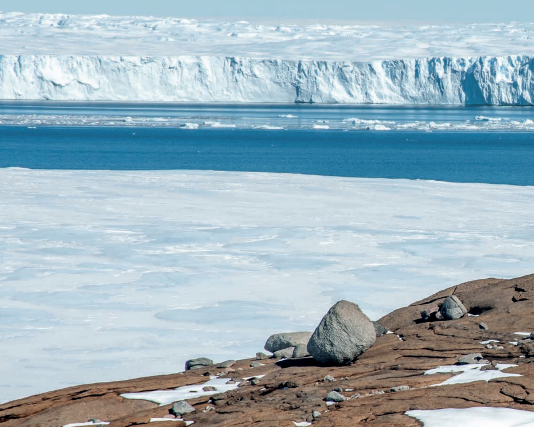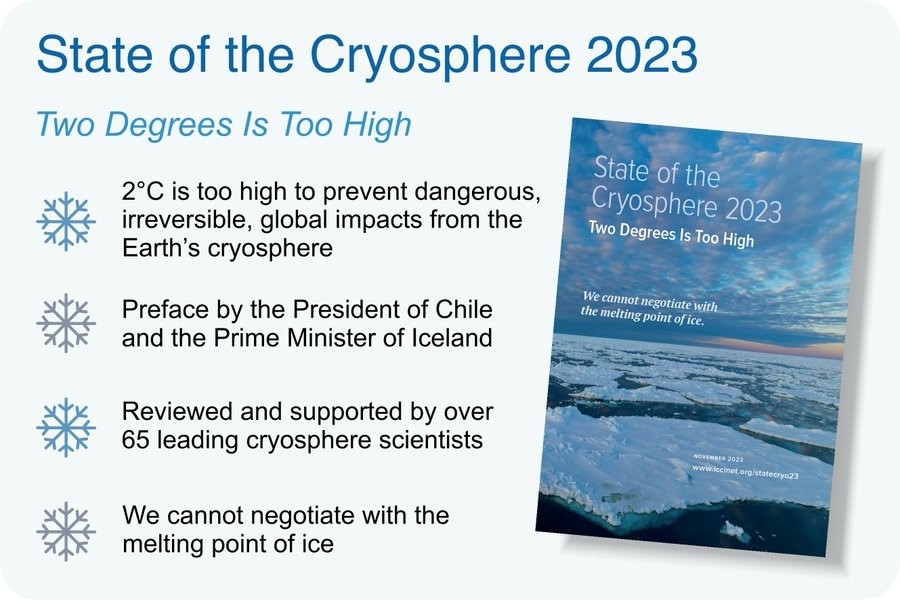Description

Disclaimer: Copyright infringement not intended.
Context
- Recently, the State of the Cryosphere 2023 report was released.
READ ABOUT CRYOSPHERE: https://www.iasgyan.in/daily-current-affairs/global-cryosphere
Cryosphere
- The cryosphere is the name given to Earth’s snow and ice regions and ranges from ice sheets, glaciers, snow, and permafrost to sea ice and the polar oceans – which are acidifying far more rapidly than warmer waters.
Findings of the Report
- The State of the Cryosphere 2023 – Two Degrees is Too High report shows that all of the Earth’s frozen parts will experience irreversible damage at 2°C of global warming, with disastrous consequences for millions of people, societies, and nature.
- Confirming that just 2°C of global warming will trigger irreversible loss to Earth’s ice sheets, mountain glaciers and snow, sea ice, permafrost, and polar oceans, it updates the latest science and highlights the global impacts from cryosphere loss.

Key findings in the report on the impact of 2°C of warming include:
- Ice sheets: nearly all of Greenland, much of West Antarctica, and even vulnerable portions of East Antarctica will be triggered to very long-term, inexorable sea-level rise.
- Glaciers: extensive, irreversible ice loss from the world’s glaciers in many major river basins, with some disappearing entirely. As glaciers melt, risks of catastrophic events such as landslides, sudden ice shears, and glacial lake outburst floods increase.
- Sea ice: extensive sea ice loss at both poles, with severe feedbacks to global weather and climate. By 2°C, the Arctic Ocean will be sea ice-free in summer every year, potentially for several months.
- Permafrost: extensive permafrost thaw and resulting greenhouse gas emissions will cause temperatures to continue to rise, even once human emissions reach zero. At 2°C, annual total permafrost emissions (both CO2 and methane) would total the size of the entire European Union’s emissions from 2019.
- Polar ocean acidification: year-round, permanent corrosive ocean acidification conditions in many regions of Earth’s polar and near-polar seas. Shell-building animals, and commercial fisheries that rely on them in the food chain may not survive.
|
PRACTICE QUESTION
Q. The cryosphere plays a significant role in the global climate and in climate model response to global changes. Discuss.
|














